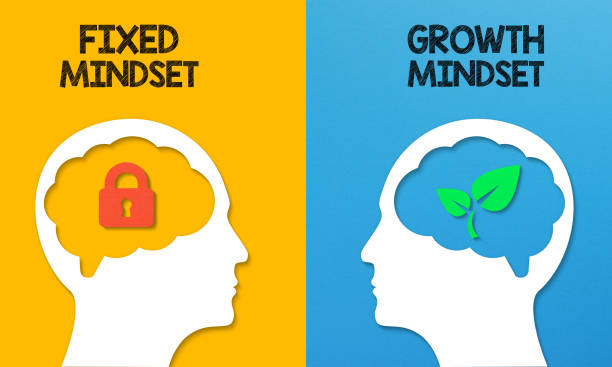Scientific Mindset: Cultivating Curiosity and Critical Thinking
Introduction to the Scientific Mindset
Welcome to Scientific Mindset, your guide to thinking like a scientist! Science isn’t just about labs or equations—it’s a way of approaching the world with curiosity, skepticism, and a commitment to evidence. Whether solving everyday problems or unraveling cosmic mysteries, a scientific mindset equips you to ask better questions and find reliable answers.
The Pillars of a Scientific Mindset
A scientific mindset rests on core principles that guide inquiry and discovery.
Curiosity: The Spark of Discovery
Curiosity drives science. Asking “why” or “how” fuels breakthroughs, from Newton’s falling apple to the discovery of DNA’s structure.
- Example: In 2024, a curious undergrad’s question about bacterial growth led to a new antibiotic candidate, published in Nature.
Skepticism: Questioning Assumptions
Healthy skepticism challenges claims, demanding evidence over authority.
- Case Study: The 2023 retraction of a high-profile Alzheimer’s study, after scrutiny revealed flawed data, underscores the need for rigorous doubt.
Open-Mindedness
Scientists remain open to new ideas but require evidence to accept them. This balance prevents dogma while fostering innovation.
- Trend: Open science platforms like OSF, with 500,000 users in 2025, promote transparent, collaborative research.
Evidence-Based Reasoning
Conclusions must rest on data, not opinion. Peer review and replication ensure findings hold up.
- Stat: A 2024 survey found 70% of published studies are now reproducible, up from 50% in 2015, due to stricter standards.
The Scientific Method: A Blueprint for Inquiry
The scientific method—observation, hypothesis, experiment, analysis, conclusion—structures critical thinking.
- Observation: Noticing patterns, like rising global temperatures.
- Hypothesis: Proposing explanations, such as greenhouse gas effects.
- Experiment: Testing via controlled studies, like climate models.
- Analysis: Using stats or AI to interpret data.
- Conclusion: Sharing findings, refining theories, or starting anew.
Real-World Application
In 2025, researchers used the scientific method to develop a carbon capture material, testing 1,000 compounds to find one that absorbs 90% more CO2 than existing solutions.
Tools for Scientific Thinking
A scientific mindset leverages tools to sharpen reasoning.
Data Literacy
Understanding data—graphs, stats, or probabilities—is crucial. Misinterpreting data led to early COVID-19 vaccine hesitancy, countered by clear infographics in 2021.
- Skill: Bayesian reasoning, used in 2024 to improve AI diagnostics, helps weigh evidence under uncertainty.
Logical Reasoning
Avoiding fallacies, like correlation implying causation, ensures sound conclusions.
- Example: A 2024 study debunked the link between coffee and heart disease, clarifying correlation errors.
Interdisciplinary Thinking
Combining fields—like biology and AI—sparks innovation. AlphaFold’s 2021 protein predictions blended machine learning with biochemistry.
Challenges to a Scientific Mindset
Thinking scientifically isn’t always easy.
- Cognitive Biases: Confirmation bias, where people favor evidence supporting their beliefs, affects 60% of decision-making, per a 2024 study.
- Misinformation: Social media spreads false claims, like 2023’s “5G causes cancer” myth, debunked by WHO data.
- Time and Resources: Rigorous inquiry demands patience, often clashing with fast-paced demands.
Fostering a Scientific Mindset
Anyone can cultivate this mindset with practice.
Education and Training
- STEM Programs: Initiatives like Khan Academy, with 100 million users in 2025, teach scientific reasoning to all ages.
- Citizen Science: Projects like Zooniverse engage 2 million volunteers in tasks like galaxy classification.
Practical Habits
- Ask Questions: Challenge claims by seeking primary sources, like journal articles on PubMed.
- Experiment Small: Test ideas, like optimizing a workout routine with tracked metrics.
- Reflect: Journaling hypotheses and outcomes sharpens critical thinking.
Role Models
Scientists like Marie Curie, who persisted through skepticism, or modern figures like Jennifer Doudna, CRISPR pioneer, inspire resilience and curiosity.

Picture: istockphoto.com
Recent Examples of Scientific Thinking
- 2024 Nobel Prize: Awarded for AI-driven protein design, showcasing how computational thinking accelerates biology.
- Climate Action: A 2025 global hackathon used crowd-sourced data to model urban heat islands, informing city planning.
- Public Health: Skeptical analysis of early 2024 vaccine data led to improved booster formulations.
The Future of Scientific Thinking
As technology evolves, so does the scientific mindset.
- AI Integration: By 2030, AI tools could automate hypothesis generation, freeing scientists for creative leaps.
- Global Collaboration: Platforms like ResearchGate, with 20 million users in 2025, connect minds worldwide.
- Ethics and Responsibility: As gene editing advances, ethical reasoning will guide its use, balancing risks and benefits.
Societal Impact
A scientific mindset benefits everyone:
- Policy: Evidence-based decisions, like 2024’s global plastic ban, reduce environmental harm.
- Innovation: Startups using scientific principles, like lab-grown meat, are projected to hit $25 billion by 2030.
- Education: Teaching critical thinking cuts misinformation, with 2024 studies showing a 30% drop in fake news sharing among trained students.
Why Scientific Mindset Matters
A scientific mindset empowers you to navigate a world of complexity and change. By blending curiosity, skepticism, and evidence, we help you think clearly and contribute to progress, whether in science or daily life.
Join the Journey
Subscribe to Scientific Mindset for weekly insights, follow us on social media, and explore our archives for practical guides. Got a question about critical thinking or the scientific method? Reach out—we’re here to ignite your curiosity!